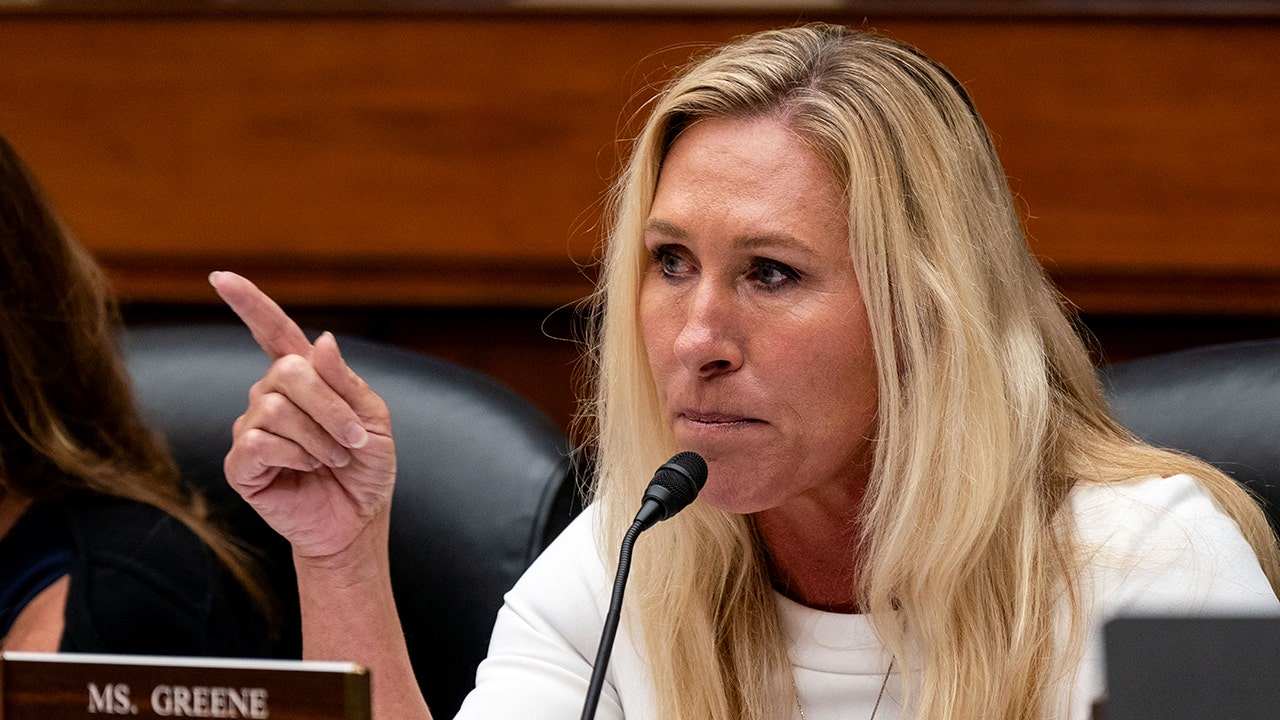Connecticut
9/11 memorial events planned across Connecticut
/cloudfront-us-east-1.images.arcpublishing.com/gray/3AJP5G3LZ5FSPKODHVFY3LFQ34.jpg)
(WFSB) – Monday marked 22 years since nearly 3,000 people died in the Sept. 11, 2001 terrorist attacks.
A number of ceremonies and events were planned across the country and in Connecticut.
One hundred and sixty one people with ties to the state were killed in the attacks.
“On this day 22 years ago, one of the greatest tragedies in American history hit all too close to home, and we will forever pay tribute to the innocent lives that were taken all too soon and honor the heroism of those who gave their lives while rescuing others, including the many first responders,” said Gov. Ned Lamont. “We also pay tribute to the brave men and women from the U.S. military who serve our nation and protect our freedoms each and every day, as well as the many military heroes whose lives were lost in the ongoing battle to keep us safe since 2001. On this anniversary, I urge the residents of our state to remember the unity and compassion that bonded all of us as a nation in its immediate aftermath and recommit ourselves to improving our world for the better.”
Here is a list of events scheduled for Monday, Sept. 11, 2023:
Avon
Town green, 8 a.m.
Bridgeport
Bridgeport Fire Headquarters, 8:30 a.m. – 9:30 a.m.
Greenwich
Gov. Lamont to attend ceremony at Cos Cob Park, 8:46 a.m.
Groton
Flag retirement ceremony, Historic Ship Nautilus & Submarine Force Museum, 8:30 a.m.
Six volley gun salute, Nautilus Pier, 8:46 a.m.
Meriden
Outside City Hall, 8:30 a.m. (if raining, inside City Hall Council Chambers)
Wilton
Wilton Fire Department, Danbury Road, 10 a.m.
Americans planned to remember 9/11 with scheduled ceremonies on Monday.
Copyright 2023 WFSB. All rights reserved.

Connecticut
Officials: CT troopers respond to 108 crashes from midnight Monday to about noon Tuesday

As of noon Tuesday, Connecticut State Police stopped 98 vehicles since the start of the Christmas holiday.
State police responded to 108 vehicle crashes, including 12 in which a person was injured. No fatalities were reported.
Eleven people were arrested for driving under the influence since midnight Monday.
State police responded to 982 calls from motorists seeking assistance on the highway.
Connecticut
O Little Town of Bethlehem: Connecticut Town Celebrates Christmas All Year Long

A rural town connects beautifully to the miraculous event so long ago.
“O little town of Bethlehem, how still we see thee lie,” begins a beloved Christmas carol sung since 1868, paying homage to Jesus’ birthplace.
But have you heard of Bethlehem, Connecticut?
It’s a favorite destination because of its Christmas connection. With approximately 3,400 residents, modest in size like its ancient namesake once was, the rural town of Bethlehem has two places that connect beautifully to that miraculous event of the Nativity.
The Nutmeg State’s Bethlehem is home to Regina Laudis Abbey, a community of cloistered Benedictine nuns founded after World War II. Here, the nuns have a magnificent early-18th-century Neapolitan crèche, displayed in a restored barn nearly as old and donated specifically to house this Nativity scene. Both the crèche and barn received a meticulous four-year restoration completed less than two decades ago by experts from the Metropolitan Museum of Art in New York City.
This is no small Neapolitan crèche. It spans 16 feet wide and 6 feet deep. The Nativity scene takes place before a backdrop mural of an 18th-century seaside and an azure sky.
Jesus, Mary and Joseph are at the heart of the crèche where our Savior’s birth is set vividly in a Neapolitan mountainside village — complete with angels hovering in wonderment and awe and scores of villagers react in different ways to the overwhelming presence of the Holy Family.
Simple peasants close to the Holy Family stand in awe and mingle with the Three Kings. Some villagers stop to contemplate Jesus’ birth. Others go on with everyday life as if nothing unusual or life-changing is happening.
The animated scene’s 68 figures and 20 animals of carved wood, ceramic, metal and plant fiber stand up to 16 inches high. They’re dressed in their original period dress that the Metropolitan Museum specialists also carefully restored to pristine condition.
From all indications and evidence, this crèche was a gift to Victor Amadeus II of Sardinia on his coronation in 1720. In 1948, it was brought to America and then in 1949 the woman who then owned it donated it to the abbey to preserve and display it.
Also on the abbey’s grounds is a simple, life-size Nativity scene of the Holy Family, located in a simple shed, with Joseph dressed in a checked farmer’s jacket. Abbey visitors might even spot a sheep or two.
Later during the Christmas season, you might want to watch the 1949 film Come to the Stable that tells the story of Regina Laudis Abbey and whose main characters, two nuns played by Loretta Young and Celeste Holm, are based on the actual Benedictine nuns who came from France after World War II to establish it. It’s a much neglected classic.
Church Highlights Nativity All Year
In nearly a straight line, less than 3 miles from the abbey and a few yards from the center of town, the Church of the Nativity remembers the birth of Jesus year-round. Now a part of Prince of Peace parish, the church was built in 1992 of fieldstone and wood and specifically designed to suggest or look like a large crèche. The church is topped with a star that is lit at night and directs people to the sacred edifice like the star directed the Magi.
The focal point of the church vestibule is a life-size manger scene. The figures were carved from a single pine tree by a Maine artist.

A panorama of the town of Bethlehem is etched high on the glass behind the Holy Family. Etched on another glass panel are the Three Kings, depicted following the star to adore the Newborn King.
In the nave, the church’s interior of stone, wood and large beams intentionally add to the manger atmosphere — as do the words “O Come All Ye Faithful” that stretch and beckon from high behind the altar.
The Nativity atmosphere continues all year. The Knights of Columbus built a 20-foot crèche on the parish’s front lawn.
Another Major Nativity
A little over 500 feet away is the Bethlehem Post Office, which, of course sees lots of extra traffic at this time of year — people enjoy getting their Christmas cards postmarked from “Bethlehem” and envelopes stamped with a Christmas greeting from the town.
Those who do visit these two Nativity treasures can continue singing Little Town of Bethlehem’s later verses:
How silently, how silently The wondrous gift is given! So God imparts to human hearts The blessings of His heaven. No ear may hear His coming, But in this world of sin, Where meek souls will receive him still, The dear Christ enters in.
O holy Child of Bethlehem Descend to us, we pray Cast out our sin and enter in Be born to us today O come to us, abide with us Our Lord Emmanuel!
PLAN YOUR VISIT
Visiting hours for the abbey crèche: Wednesdays through Sundays from 10 a.m. – 3 p.m. Closed Mondays and Tuesdays. Winter Closure: Jan. 7-Easter Sunday; free.
Connecticut
Man shot, killed in New Haven

A man has died after he was shot in the Elm City Tuesday night.
While details remain limited, police say the shooting happened on Edgewood Avenue.
No arrests have been made at this time and police are only tentatively identifying the man as a 43-year-old New Haven resident.
Anyone with any information is being asked to contact New Haven Police.
-
/cdn.vox-cdn.com/uploads/chorus_asset/file/24924653/236780_Google_AntiTrust_Trial_Custom_Art_CVirginia__0003_1.png)
/cdn.vox-cdn.com/uploads/chorus_asset/file/24924653/236780_Google_AntiTrust_Trial_Custom_Art_CVirginia__0003_1.png) Technology5 days ago
Technology5 days agoGoogle’s counteroffer to the government trying to break it up is unbundling Android apps
-

 News6 days ago
News6 days agoNovo Nordisk shares tumble as weight-loss drug trial data disappoints
-

 Politics6 days ago
Politics6 days agoIllegal immigrant sexually abused child in the U.S. after being removed from the country five times
-

 Entertainment6 days ago
Entertainment6 days ago'It's a little holiday gift': Inside the Weeknd's free Santa Monica show for his biggest fans
-

 Lifestyle6 days ago
Lifestyle6 days agoThink you can't dance? Get up and try these tips in our comic. We dare you!
-

 Technology1 week ago
Technology1 week agoFox News AI Newsletter: OpenAI responds to Elon Musk's lawsuit
-
/cdn.vox-cdn.com/uploads/chorus_asset/file/25672934/Metaphor_Key_Art_Horizontal.png)
/cdn.vox-cdn.com/uploads/chorus_asset/file/25672934/Metaphor_Key_Art_Horizontal.png) Technology1 day ago
Technology1 day agoThere’s a reason Metaphor: ReFantanzio’s battle music sounds as cool as it does
-

 News2 days ago
News2 days agoFrance’s new premier selects Eric Lombard as finance minister





:max_bytes(150000):strip_icc():focal(749x0:751x2)/amanda-kloots-christmas-tout-122524-dbebc3a55973481ea2417e6e38093935.jpg)













